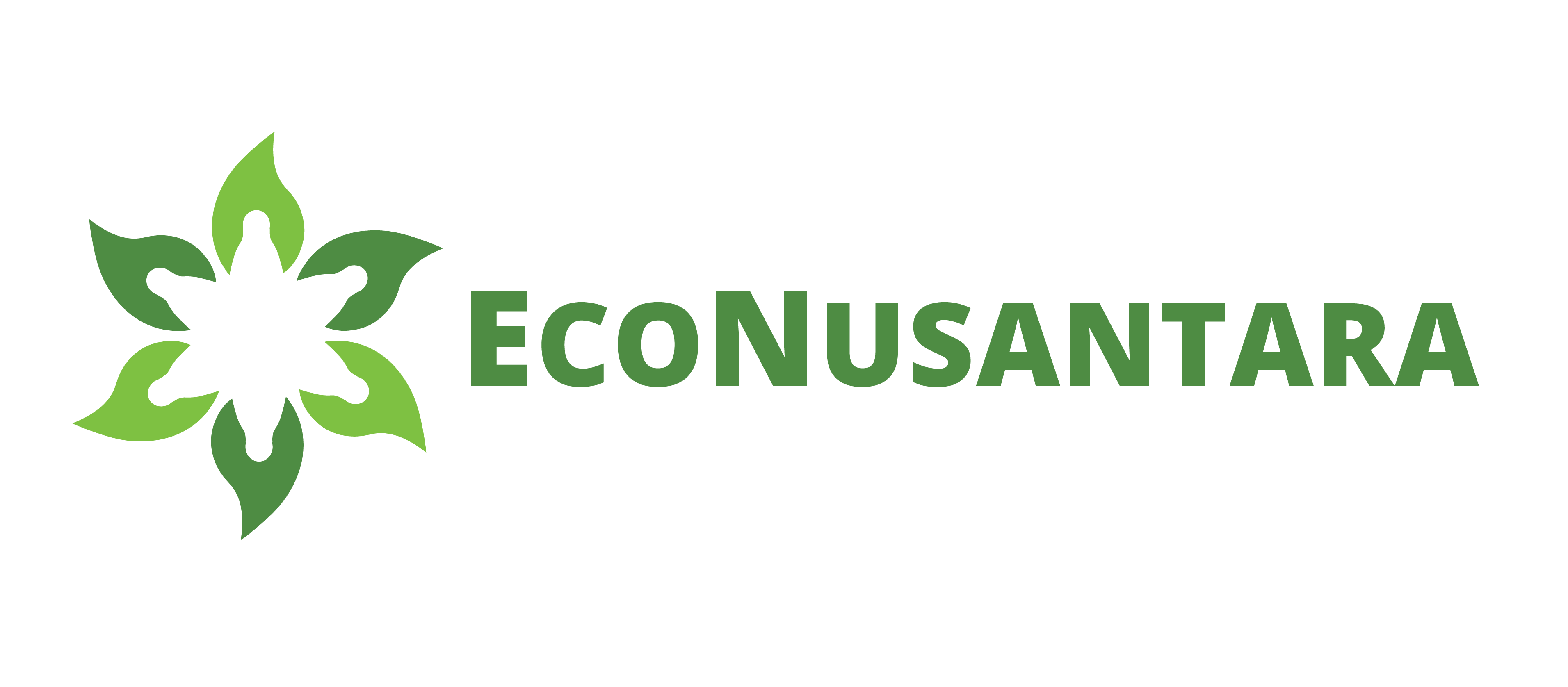Processed from various sources by: Asep Adhikerana, EcoNusantara Lestari.
PRELIMINARY
In the global supply chain, palm oil processing companies play a strategic role for the sustainability of oil palm plantations. Under pressure from NGOs and buyers, Wilmar International – as the market leader – became the first company to commit to an NDPE (No Deforestation, No Peat, No Exploitation) policy at the end of 2013. Then since 2014, several large palm oil processing companies has adopted the policy. Globally, NDPE is considered the most powerful private instrument for breaking the link between deforestation and oil palm. In 2017, 46% of the world’s largest palm oil producers and traders had comprehensive NDPE commitments. By 2020, almost all major companies have committed to NDPE. Major companies involved in the global palm oil supply chain include plantation companies (own plantations and plantation areas of third party suppliers), trading companies, consumer goods companies, and financial institutions. The palm oil industry has pioneered the use of this type of sustainability commitment as part of its efforts to create transformational change in supply chains.
The NDPE policy includes commitments to the following: Free Prior and Informed Consent (FPIC) for indigenous peoples and other local communities; zero burning; prevention of bad working conditions; and conservation of High Conservation Value (HCV/HCV) areas, High Carbon Stock (HCS/HCS) areas and peatlands.
This paper provides a brief explanation of the terms and main ideas behind NDPE commitments.
MEANING OF NDPE
- No Deforestation
This commitment is to avoid deforestation when clearing land to produce related commodities or activities. Implementation of these commitments usually refers to the HCS and HCV approaches, which also include regulating burning practices and reducing greenhouse gas (GHG) emissions in existing plantations.
- No Development on Peat
This commitment is not to undertake new developments on peatlands, and to encourage the use of Best Management Practices on existing plantations on peatlands. If possible, peat restoration should also be implemented.
- No Exploitation
This commitment refers to the non-exploitation of workers, local communities or small-scale farmers, in the production of agricultural commodities. This commitment is about respecting human rights, with a focus on the rights of indigenous and local communities, workers and smallholders.
KEY POINT ON ‘NO DEFORESTATION’: ‘D’ ON NDPE
- Landscape approach
Identification and conservation of HCV/HCV and HCS/HCS areas should be carried out in the development area and surrounding landscape. Ignoring the wider landscape context can increase the risk of habitat fragmentation and ecological degradation.
- Continuous management and monitoring of HCV and HCS areas and compensation of any of the lost areas
In order to avoid the negative impact of practices carried out in plantation management units or other production sites in HCV and HCS areas, companies must establish appropriate management measures, and monitor the implementation and effectiveness of these measures. If any areas of HCV and HCS are lost, these areas must be restored or compensated.
- Respecting community rights to their land and Free, Prior and Informed Consent (FPIC)
For effective plantation management, local communities must be involved and active in the process of identifying their rights to land, especially through consultation before conversion and ensuring that they give informed consent based on mutually understood accurate information (FPIC principle).
- Identification, assessment, reduction and monitoring of GHG emissions from operations
Companies must assess GHG emissions from operations and design a management plan to reduce them. Monitoring of GHG emissions and the effectiveness of reducing management actions is also required.
- Do not burn or use fire for land clearing/replanting
The burning method for land clearing and replanting greatly increases the risk of forest fires.
KEY POINTS ABOUT PEAT/PEAT: ‘P’ ON NDPE
- Protect and manage peatlands in a sustainable manner
All peatlands in existing plantations must not be degraded and must be managed responsibly in accordance with Best Management Practices. Peatland management should be part of an integrated management plan to protect and/or enhance HCV/HCV, HCS/HCS forests, peatlands, and other conservation areas.
- Identify, map and report peat areas
Peatlands within managed areas should be inventoried, mapped and monitored to understand where they are, and to inform effective management.
- Water management
Peat is made up of 90% water by weight so changes in the water regime have a fundamental effect on the peatland ecosystem. The main cause of peat fires can be attributed to the over-draining of peatlands due to poor water management and over-drainage. The water level in plantations on peatlands should be managed according to best practice, maintaining the water level as high as possible and minimizing drainage.
- Protecting the hydrology of adjacent peat swamp forest
Clearing and draining of land in adjacent areas, and hydrologically associated with peat forests, can lead to hydrological changes and subsequent degradation. It also often leads to an increased risk of flooding or fires, and increased human, wildlife and social conflicts for the associated plantations.
- Fire prevention
Fire prevention requires effective fire monitoring and surveillance, and the distribution of information to relevant stakeholders on the ground. Uncontrolled drainage and use of fire in land clearing are the main factors causing peat fires.
- Dialogue and collaboration with local communities
Collaboration with local communities is an effective way to prevent the use of fire and to increase the protection of intact peatland areas.
- Peat restoration
Where necessary, peat restoration should be carried out following best management practices.
- No development on peatlands
There should be no new development on peatlands.
- Do not burn or use fire for land clearing/replanting
The burning method for land clearing and replanting greatly increases the risk of fire.
- Controlled drainage
Drainage in all operational areas must be controlled, because uncontrolled drainage is the main cause of peatland ecosystem degradation and fires.
KEY POINT ABOUT ‘NO EXPLOITATION’: ‘E’ ON NDPE
- Identify and respect the rights of indigenous peoples, and local communities including smallholders
Plantation production can be associated with loss of land rights, conflicts over land as well as negative impacts on the resources used by communities (eg water pollution or air pollution). Putting in place mechanisms that avoid causing or contributing to adverse impacts on rights and providing for, or cooperating in remediation where negative impacts have occurred is important. It is important to actively engage stakeholders and respect their right to meaningful and effective participation in decision-making on matters that may affect them.
- Support small farmers
Smallholders are often important players in commodity production, but they are usually very vulnerable to price fluctuations or demands to implement changes to meet sustainability standards. Committing to Not Exploiting smallholders generally requires more than providing technical assistance to look at the welfare of small-scale farmers, including the provision of a decent living income and its impact on the wider community.
- Gender equality
Women and men can be affected differently by plantation production; either as workers, as members of society or as small producers. For example, female workers may receive lower wages for the same work, may be more at risk of harassment and may have more insecure land rights. Therefore, it is important to use a gender sensitive approach in implementing commitments, such as using a gender analysis before taking action, and ensuring that women’s voices are heard in all consultations and decision-making.
- Right to express concern and freedom from retaliation
Operations must have a complaint procedure that is fair, effective, transparent, and must ensure that whistleblowers or human rights and environmental defenders are not subjected to retaliation, victimization, intimidation or violence.
WORKERS’ RIGHTS
The following are the minimum elements covered by the International Labor Organization (ILO) Fundamental Conventions.
- Fair wages and working hours
Fair pay, reasonable working hours and other benefits such as social security are important elements of decent work. Payment of wages through the piece rate system must meet the minimum wage requirements.
- Safe and healthy workplace
Health and safety procedures must be implemented to ensure that no person is placed at undue risk of accident or illness. Provision of Personal Protective Equipment (PPE) is an important element of health and safety, as is an environment free from discrimination, intimidation or harassment of any kind.
- Freedom of association and collective bargaining
All employees have the right to organize, form and join trade unions freely and to bargain collectively. There must be no discrimination on the basis of affiliation or non-affiliation and there must be no harassment, intimidation or attempts to stop workers from association and collective bargaining.
- Grievance mechanisms and access to conflict resolution
There should be a confidential and anonymous way for workers to raise complaints, these should be handled in a timely manner and records of how remedies were achieved should be kept. They should be used to put in the repair of the system.
- No child labor
Child labor robs children of their childhood, dignity and potential for development, and is harmful to children’s physical and mental development. Workers below the national minimum age may not be employed, and young workers (under 18 but above the minimum age) may only engage in light work; they cannot be employed for hazardous work, such as long hours, night work, using chemicals, or operating machinery.
- No forced labor
Forced labor refers to a situation where people are forced to work. This can be due to the use of force or intimidation, debts to employers, retention of identity documents or threats to report to immigration authorities. Forced labor (which includes debt bondage) is a form of modern slavery; migrant workers and minority groups are particularly vulnerable groups.
- No discrimination, intimidation or harassment
There shall be no physical, mental, verbal, sexual or other abuse, inhuman or degrading treatment, corporal punishment or any other form of harassment. There shall be no discrimination against any worker – including contract, sub-contracted, temporary and migrant workers, regardless of ethnicity, race, caste, birth, age, disability, marital status, nationality, sex, religion, sexual orientation or political opinion or affiliation.

